- India EV Market
- Electric Two-Wheelers
- Electric Three-Wheelers
- EV Policy & Incentives
- Battery & Charging Infrastructure
- Sustainable Mobility
- EV Export Hub
- EV Industry Leaders
- Clean Energy Transition
- Future of Mobility
EV Market In India At Inflection Point; Growth Imminent Across Categories
- By Gaurav Nandi and Nilesh Wadhwa
- September 09, 2025
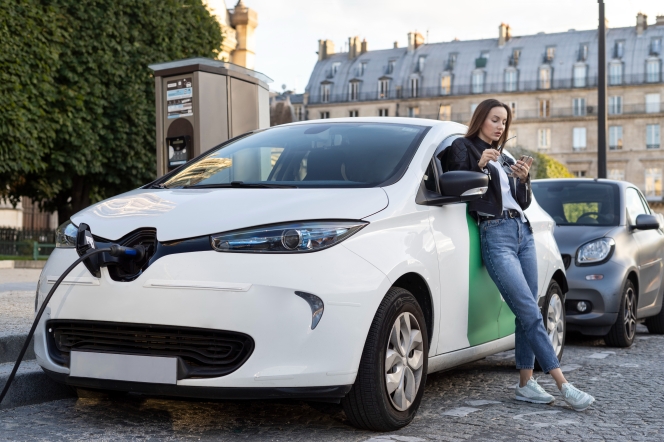
EV Market In India At Inflection Point; Growth Imminent Across Categories
The third largest automobile market saw a staggering 2,142,565 units of electric vehicles sold between September 2024 and August 2025, according to data from Vahan Dashboard (excluding Telangana).
The electric vehicle sales in India witnessed mixed sales in August, 2025, according to the same source. Statistics put electric two-wheeler sales at the lead with 104,373 units compared to July’s 103,469 units, followed by four wheelers at 17,387 units from 16,127 units a month earlier and the rest of the pie was goods carriers, buses and three-wheeler cargo carriers.
The dashboard also reported a decline in electric rickshaw sales that dell to 36,962 from 39,782 in July, followed by electric three-wheeler L5 passenger (18,007 from 20,446) and electric carts (6,213 from 6,817).
Nonetheless, the market sentiment about this vehicular segment seems to be strong. Exuding confidence on World EV Day 2025, Deepak Manwani, Head of Operations and Revenue at Yuma Energy, told Motoring Trends, “As India’s automotive sector accelerates towards electrification, the momentum is unmistakable in two- and three-wheelers. What began with fleet use cases is now rapidly entering personal mobility with adoption climbing year-on-year.”
He noted that supportive government policies such as FAME II, the newly launched PM e-DRIVE scheme and state-level EV mandates for EV adoption as well as for charging and swapping infrastructure creation are creating a strong policy tailwind.
There is also an influx of customised financing options for EVs, which is providing further impetus to the two-wheeler and three-wheeler segments. Industry projections indicate that by 2030, nearly 35–40 percent of new two-wheelers and over 50 percent of three-wheelers could be electric with more ambitious scenarios targeting up to 80 percent penetration in these categories.
Sharing the same confidence, Som Kapoor, Partner at EY India, noted, “EVs currently make up about five percent of the market and we’re at an inflection point. Growth is inevitable and the consistent share across different vehicle sizes signals strong policy support from the government. EV adoption will continue to expand as part of the overall auto market.”
He shared that post-pandemic, the Indian automobile market has witnessed stabilised growth at around 3–4 percent, rather than in double digits. With the upcoming GST changes, a boost in small cars and overall volume is expected, especially in the second half of this year.
“In terms of EVs, the two-wheelers segment, which already has a growing momentum, will continue in the path. We expect strong growth in segments where vehicles work on closed routes or where assets are monetised daily, such as three-wheelers and commercial vehicles. These areas will see tremendous adoption,” added Kapoor.
Market command
Despite a modest share in the entire automobile market currently, EVs are expected to gobble at least one-third of the pie. Alluding to this, Manwani noted, “By the end of this decade, we expect electric vehicles to command nearly a third of India’s automotive market with two and three-wheelers at the forefront of this shift. Projections indicate that up to 70–80 percent of new scooters, motorcycles and electric-rickshaws could be electric by 2030, while passenger cars and buses steadily build towards 20–25 percent adoption.”
At the global level, where there are outliers like China and the Nordics leading the EV penetration, India is broadly in line with other major markets and the adoption levels are comparable to its global peers, noted Kapoor.
Furthermore, the torch bearer for EV adoption till the end of the decade is expected to be two-wheelers and three-wheelers. “These are the vehicles that define our cities – scooters weaving through traffic, delivery bikes bringing food to our doors and rickshaws ferrying millions on their daily commutes,” said Manwani.
He added, “They are the lifeblood of urban mobility, and because they run hard and run often, they are also the first to embrace the undeniable economics of going electric. Cars, meanwhile, will follow steadily, starting with city users and early adopters who see EVs as both aspirational and practical for daily city commutes. And then there are our commercial fleets, buses connecting cities, trucks and vans moving goods across states, slowly but surely shifting to electric because the savings are too big to ignore.”
Another boon for the indigenous industry will be collaborations, according to Kapoor. “As Chinese collaboration opens up, we expect to see technology transfers and joint ventures that can accelerate India’s EV ecosystem. These partnerships will be valuable for scaling both manufacturing and innovation,” he contended.
Drawing on the same lines, Omega Seiki Mobility Chairman Uday Narang noted, “Over the past year, India’s EV sector has moved from experimentation to consolidation with stronger players and sustainable models emerging. EV three-wheelers, both passenger and cargo, along with new-age electric trucks, especially in the 1–1.5 tonne category will be the real growth drivers of this market.”
Commenting on current market domination of EVs, Kazam Chief Executive Officer Akshay Shekhar opined, “India's EV narrative is transitioning from initial curiosity to industrial scale. It is not only from the vehicles but also from charging infrastructure and software orchestration. In the next five years, we anticipate chargers to be as pervasive as fuel pumps for three- and two-wheelers with charging equipment closely integrated into fleet operations, home installations and e-commerce logistics.”
Supply and power
Volks Energie Chief Executive Officer Piyush Goyal opined that the world is moving towards largescale adoption of clean mobility and sustainable energy and that companies in India are feeling that effect.
“What started as a symbolic initiative five years ago, has turned into a global movement today as the world collectively and rapidly moves towards large-scale adoption of clean mobility and sustainable energy. This adoption reflects not only a technological change and preference but also a shift in the societal expectations from the automotive and renewable industries overall. Consumers today demand cleaner and more resilient energy systems,” he stated.
Moreover, the Central Government’s ambitious plans to make the country an export hub can well be extended to electric vehicles. Alluding to the strategy, Kapoor stated, “Our immediate priority should be strengthening the local market. That said, companies like Maruti are already exporting EV models before bringing them to Indian customers. India has the technological capability and manufacturing infrastructure to grow as an export hub over time. Steady progress will be key.”
While he noted that currently the three main challenges for higher penetration are charging infrastructure, consumer mindset shift towards EVs and high upfront cost of ownership, private charging access is seen as a crucial.
“In India, many homes lack dedicated parking slots, making at-home charging challenging. Until that improves, public charging needs significant expansion. Both private and public infrastructure must evolve to support mass adoption,” noted Kapoor.
Another barrier pointed out was the reliance on imported components. According to Manwani, “India is heavily reliant on imported components for its EVs, especially batteries and advanced electronics, which makes India vulnerable to any kind of supply shocks due to changing geo-political scenarios. The current geo-political uncertainties have caused production disruptions in the last six months. And to overcome this, India needs to have a long-term plan to become self-reliant on cell manufacturing, rare earth magnet production as well as cultivating alternative sources of lithium and other metals essential for sustaining India’s EV ecosystem.”
Motwani also added that cell prices have dropped by as much as 40–50 percent in the last 24 months and this has certainly helped spur new demand in India. This has also meant larger battery packs in vehicles, thereby helping reduce range anxiety and making EVs a viable option in a market where charging infrastructure is still catching up.
For swapping players, this has been a boon as reducing cell and battery price means faster asset deployment due to lower capex spend. This has helped drive large scale transformation in commercial mobility in line with the policy push from various quarters.
Kapoor also noted a need to change the direction of incentives. “So far, incentives have largely supported the supply side. We now need demand-side incentives, which are direct benefits to consumers that make EV adoption more attractive,” he said.
Alluding to the growing demand for EVs, Trontek Chief Executive Officer Samrath Singh Kocchar opined, “India's EV ramp-up is being driven by affordable battery prices, policy incentive and fast two-wheeler electrification but true long-term play will be in battery technology, circularity and systems thinking. Over the next five years, we expect major strides in energy density and fast-charging with battery-swapping and modular solutions gaining momentum in fleet operations.”
Battery Smart Completes 100 Million Battery Swaps In India
- By MT Bureau
- December 17, 2025
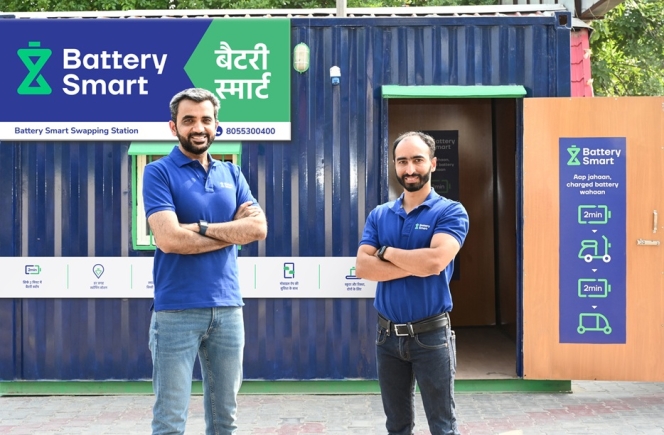
Delhi-NCR-based electric vehicle battery swapping organisation Battery Smart has announced that it has become the first company in India to complete 100 million battery swaps across its network for electric two- and three-wheelers.
The achievement comes five years after the company’s founding. Battery Smart claims it currently operates approximately 70 percent of the battery-swapping infrastructure in the country.
To mark the achievement, the company has launched an INR 100 million Driver Welfare Fund 2026, which is designed to provide insurance, financial protection and skill development for approximately 100,000 electric vehicle (EV) drivers. The fund also includes referral programmes, free swaps and community inclusion initiatives.
Pulkit Khurana and Siddharth Sikka, Co-Founders of Battery Smart, said, “Crossing 100 million swaps is a landmark for EV adoption in India, not just for us. It demonstrates the potential of battery swapping to make clean mobility accessible, affordable, and inclusive at scale. Each swap represents a choice, a driver choosing clean mobility over combustion, assurance over anxiety and improved uptime over long waiting hours. This achievement belongs to our community of drivers, battery swap station partners, OEM collaborators, investors, and policymakers who believed that battery swapping could succeed at scale in India.”
The company’s ecosystem includes over 5,000 women drivers and 250 women partners. Its technology utilises IoT-enabled batteries and real-time monitoring to enable predictive maintenance and minimize downtime for drivers in the gig economy.
“Looking ahead, the Driver Welfare Fund reinforces our commitment to the community that made this possible. As we continue to grow, we remain focused on strengthening India’s EV mobility backbone, powered by smarter IoT batteries, more efficient station operations, and robust safety systems. This milestone is just the beginning, and together, we are building the future of clean mobility for India,” added Sikka.
Going forward, Battery Smart intends to expand into 100 additional cities by 2026. The company’s roadmap involves deploying more swap stations and increasing daily swap capacity to meet demand from commercial operators. Planned investments include safety systems and IoT intelligence as the company continues to work with regulators and industry stakeholders.
Ola Electric Begins Mass Deliveries Of 4680 Bharat Cell Powered Vehicles
- By MT Bureau
- December 08, 2025
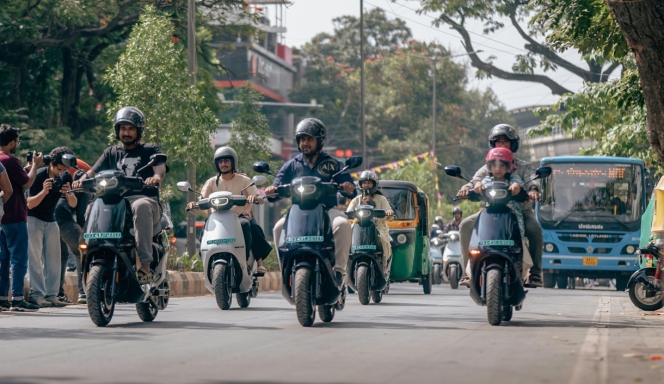
Ola Electric has announced the commencement of mass deliveries of its 4680 Bharat Cell-powered vehicles. The S1 Pro+ 5.2 kWh is the first product to be powered by the company’s indigenously manufactured 4680 Bharat Cell battery pack, which delivers more range, better performance and enhanced safety.
With its own battery packs in the vehicles, Ola Electric is now India's first company to fully own the battery pack and cell manufacturing process in-house.
The S1 Pro+ 5.2 kWh is powered by a 13 kW motor, offering acceleration of zero to 40 kmph in just 2.1 seconds. It comes with an impressive 320 km range (IDC with DIY mode).
The S1 Pro+ features four riding modes (Hyper, Sports, Normal and Eco) and also offers enhanced safety with category-first dual ABS and disk brakes in the front and rear. It also gets enhanced ergonomics and comfort, a two-tone seat with supportive foam, body-coloured mirrors, a die-cast aluminium grab handle, rim decals and an expanded colour palette comprising Passion Red, Porcelain White, Industrial Silver, Jet Black, Stellar Blue and Midnight Blue.
“The excitement for S1 Pro+ has been phenomenal. Deliveries are now in full swing, and customers are proudly riding India’s first scooters powered by our own 4680 Bharat Cell. This is a big moment, not just for Ola, but for India’s journey towards becoming a global EV hub. With the national rollout starting soon, we are now ready to take this breakthrough product and technology to every corner of the country,” an Ola Electric spokesperson said.
Trinseo Launches Fourth-Generation Binder For The Next Wave Of EV Batteries
- By MT Bureau
- December 03, 2025
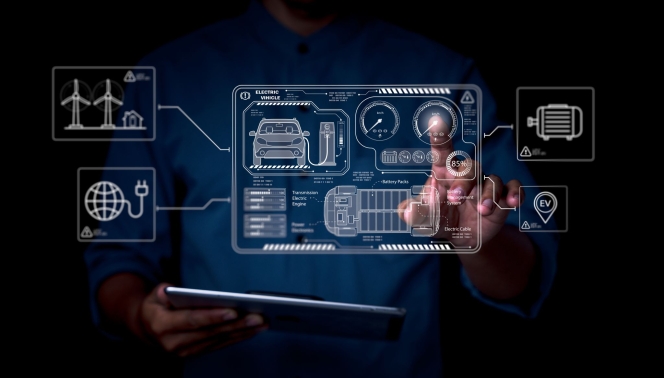
Trinseo has introduced its latest innovation, the Fourth-Generation SBR Binder Platform, designed to meet the evolving demands of electric vehicles and battery energy storage systems. This development reflects the company's strategic focus on delivering high-performance materials essential for the global shift towards sustainable energy.
The platform results from advanced polymer science and collaboration with battery manufacturers, targeting key industry requirements such as increased energy density, superior durability and more efficient production. It provides a significant improvement in peel strength, enabling stronger electrode bonds, thicker coatings and higher manufacturing speeds. These attributes are vital for developing higher-capacity batteries that can extend driving range and improve storage solutions.
The inaugural product, VOLTABOND 109 Latex Binder, offers this next-generation performance with broad compatibility across various anode materials and manufacturing processes. Its design ensures excellent stability and low resistance, supporting faster charging and long-term reliability. To ensure robust supply, Trinseo will produce the platform locally within major global regions, enhancing responsiveness to battery production hubs.
Rooted in decades of expertise, this new platform establishes a foundation for future innovations tailored to diverse customer needs across the battery value chain.
CATL And Stellantis Begin Work On EUR 4.1 Billion Spanish Battery Plant
- By MT Bureau
- November 28, 2025
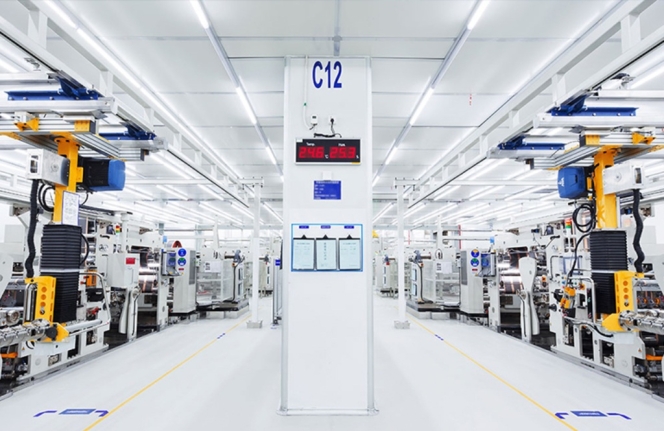
CATL and Stellantis broke ground on a EUR 4.1 billion battery plant in Figueruelas, Spain, on 26 November. The 50:50 joint venture will produce lithium-iron-phosphate battery cells and targets an annual production capacity of 50 GW/h.
The project, which is Spain’s largest battery factory, is backed by over EUR 300 million in EU funds, with production expected to start in late 2026.
According to unions, around 2,000 Chinese workers will help construct the site, a point of contention with local authorities and residents. Also, 3,000 Spanish staff are to be hired and trained later.
Spanish authorities and residents have voiced concerns about job opportunities for local workers and potential strain from the influx of foreign employees. CATL Vice President Meng Xiangfeng said earlier in November the company needed experienced technicians to build and fine-tune production lines, with plans to train local workers to take over operations gradually.
David Romeral, Director General of CAAR Aragon, a network of automotive businesses in the region, said: “We don’t know this technology, these components – we’ve never made them before. They’re years ahead of us. All we can do is watch and learn.”
The regional government is organising work permits for arriving workers while seeking to attract battery supply chain companies to Aragon. Some Chinese technicians and managers have already arrived, with several hundred more expected by year-end and nearly 2,000 by the end of next year.
CATL’s approach contrasts with its Hungarian site in Debrecen, where it hired mostly locals to build its European plant. However, a lack of local workers caused production to be delayed from late 2025 into mid-2026. The Figueruelas facility will serve as CATL’s third European manufacturing operation, alongside the Hungarian plant and one in Germany.






Comments (0)
ADD COMMENT